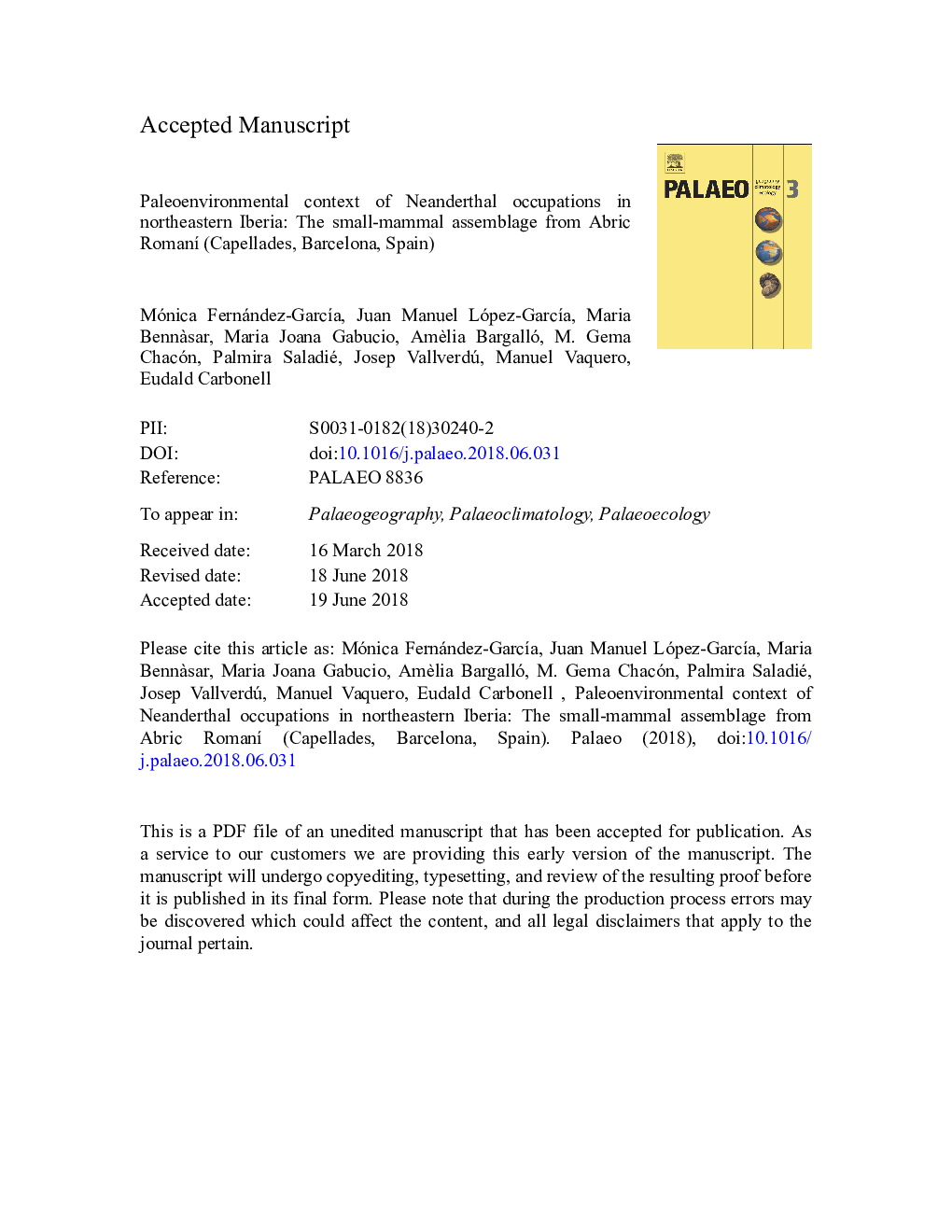| Article ID | Journal | Published Year | Pages | File Type |
|---|---|---|---|---|
| 8868103 | Palaeogeography, Palaeoclimatology, Palaeoecology | 2018 | 48 Pages |
Abstract
The Abric Romanà site (Capellades, Barcelona, Spain) constitutes a key site for understanding the latest Neanderthal occupations in Western Europe. Here we present a comprehensive systematic and taphonomic analysis of a small-mammal assemblage from Level O of the Abric Romanà site, with the aim of reconstructing the paleoecological context in which the Neanderthals lived. The assemblage, which probably dates from a stadial episode between Interstadial 15 and Interstadial 14, contains fifteen small mammal species, including species uncommon for the northeast of Iberia, such as Sciurus vulgaris, Nyctalus lasiopterus and Pipistrellus pipistrellus. Taphonomic studies suggest a predatory origin for the assemblage, probably related to Strix aluco, and paleoecological inferences suggest lower temperatures (â3/â4â¯Â°C) and higher rainfall (+70/+170â¯mm) than at present and a landscape dominated by an open forest with watercourses. The new data improve our knowledge of trends associated with Marine Isotope Stage 3 that affected Neanderthal populations in the Iberian Peninsula, showing that the Neanderthals were well adapted to cooler and wetter conditions across Iberia.
Related Topics
Physical Sciences and Engineering
Earth and Planetary Sciences
Earth-Surface Processes
Authors
Mónica Fernández-GarcÃa, Juan Manuel López-GarcÃa, Maria Bennà sar, Maria Joana Gabucio, Amèlia Bargalló, M. Gema Chacón, Palmira Saladié, Josep Vallverdú, Manuel Vaquero, Eudald Carbonell,
